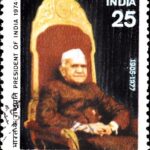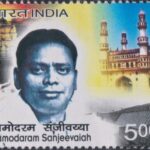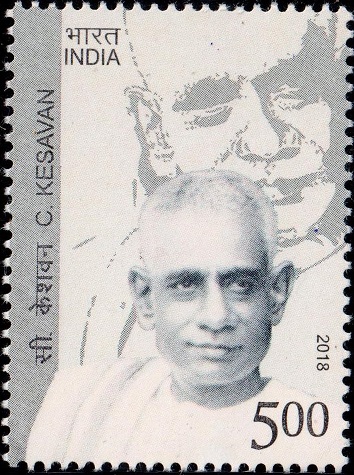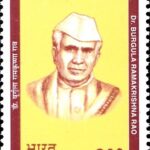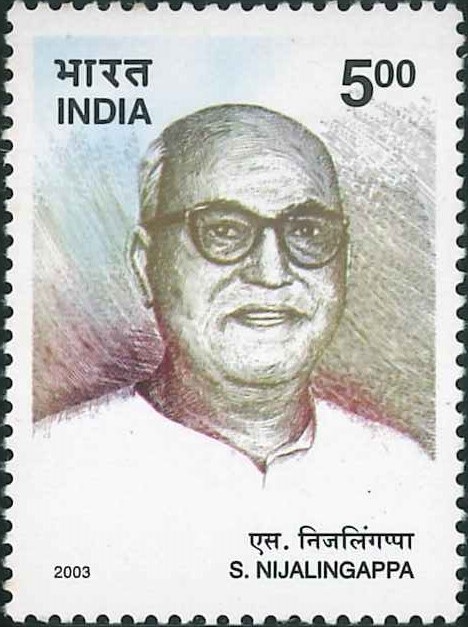
S. Nijalingappa
A commemorative postage stamp on the Birth Centenary of Siddavanahalli Nijalingappa, 4th Chief Minister of Karnataka (1956-58, 1962-68) :

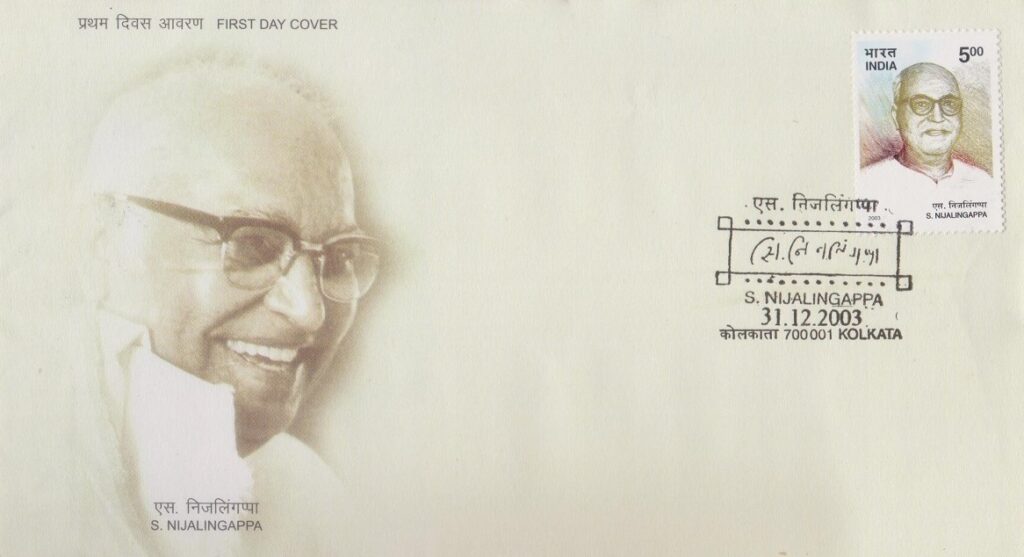
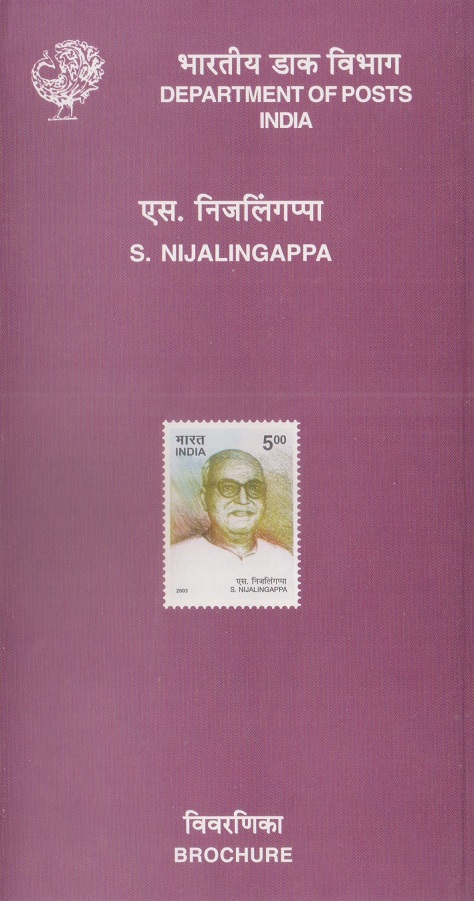 Issued by India
Issued by India
Issued on Dec 31, 2003
Issued for : The Department of Posts pays a tribute to this visionary through the issue of this commemorative postage stamp.
Credits :
Stamp : Kamleshwar Singh
FDC : Alka Sharma, based on material supplied by proponent.
Cancellation : Alka Sharma
Type : Stamp, Mint Condition
Colour : Four Colour
Denomination : 500 Paise
Overall size : 2.9 x 3.91 Cms.
Printing size : 2.9 x 3.91 Cms.
Perforation : 13 x 13
Paper : Imported Unwatermark Stamp Paper
Print Quantity : 0.4 million
Number of Stamps per sheet : 40
Printing Process : Photo Offset
Printer : Madras Security Printers
Name : Siddavanahalli Nijalingappa
Born on Dec 10, 1902 at Siddavanahalli, Chitradurga, Karnataka, India
Died on Aug 8, 2000 at Chitradurga, Karnataka, India
About :
- A plain country gentleman, fervent in religion, fierce in patriotism, brilliant in leadership; such was Siddavanahalli Nijalingappa. His figure straddled the history of Karnataka and left a mark that has never been effaced. Born on 10 December, 1902, young Nijalingappa had a secure childhood. The teachings of his parents laid the foundation for a secular outlook and his education at Davangere and Chitradurga further widened his perspective. He obtained a degree in Law in 1926 at Poona where he studied in Fergusson College. His guiding principles as a lawyer were truth and justice and he believed that making money was not the goal of a lawyer. The freedom movement drew him into its fold and he abandoned all things foreign, adopting Khadi for his attire.
- Nijalingappa‘s public and political career can be broadly divided into five successive phases – his role as a leader of the Karnataka Ekikarna (Unification) Movement, participation in the freedom movement as a member of the Gandhiji-led Congress, his achievements as the Chief Minister of united Karnataka State, his role as the President of the undivided Indian National Congress at a critical juncture, and the final phase, in which he blossomed into a great statesman trying hard, in spite of old age and failing health, to rouse the conscience of a nation in the spirit of Gandhiji. We take a brief look at each of these phases.
- Karnataka‘s territorial, caste and communal fragmentations provided the backdrop for Nijalingappa‘s stellar role in the Ekikarna Movement. Territorially, it was divided into five sub regions – old princely Mysore State, old Hyderabad State of the Nizam, Madras Karnataka, Bombay Karnataka and Uttara Kannada and the Chief Commissioner’s province of Coorg. Apart from the caste and communal factions, there was division between the Congress and the non-Congress parties. The only unifying factor was the Kannada language and it is a measure of Nijalingappa‘s astuteness that he was able to harmonize all these fragments and carve out a broadly acceptable Karnataka State.
- The second major role that Nijalingappa played with a fire in his belly was towards the liberation of his motherland from the colonial yoke. Important landmarks in this direction include participation and subsequent arrest in the Flag Movement in 1938 at Shivapur near Maddur and organization and leadership of the struggle against the provisions of the Forest Act near Chitradurga in which he led the Congress workers in cutting down toddy palm trees.
- Formation of a separate Karnataka State and leading it as its first Chief Minister was the third major milestone that marked Nijalingappa‘s life. Towards this end he succeeded in persuading the powers that be to accept the logic of federalizing the Indian polity along linguistic lines. In his two stints as Chief Minister, his significant achievements lay in the nationalization of Kolar Gold Fields in 1956, successful handling of the issue of socio-economic justice for backward and weaker sections by extending the reservation scheme in existence in Old Mysore to the whole state, setting up of the Bangalore dairy, encouragement of Khadi and Village industries in rural areas, construction of Tunga Canal and Mangalore harbour and the development of agro-industries, wool industry, paper mills, cooperative sugar factories, roads, mining and Sainik School at Bijapur.
- On his entry into national level politics, Nijalingappa donned the mantle of the President of the Congress, giving up his third Chief Ministerial assignment. This was the period during which there was a rift between the old guard and the newer generation that eventually led to the fragmentation of the Congress, despite Nijalingappa‘s best efforts to prevent it. His role as a Statesman – the fifth major phase of his life – trying to keep the nation’s conscience like a true Gandhian stemmed from these efforts. In this role, he emphasized upon the politics of principles and moral values. He vehemently condemned the unprincipled lust for power and self-aggrandizement. He was committed to creating a humanistic, egalitarian, moral and democratic political environment. He visualized an India that was not just a politically independent entity but an India that was economically strong, socially vibrant and modern in outlook.
- Text : Based on material received from the proponent.



